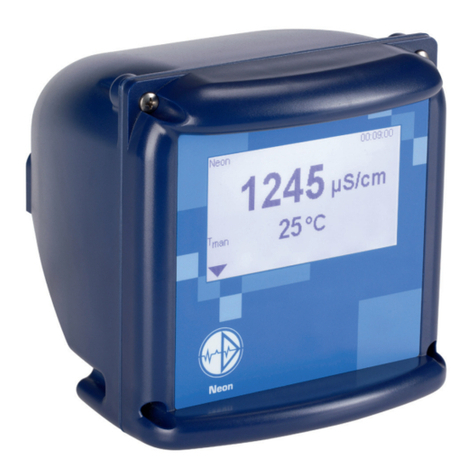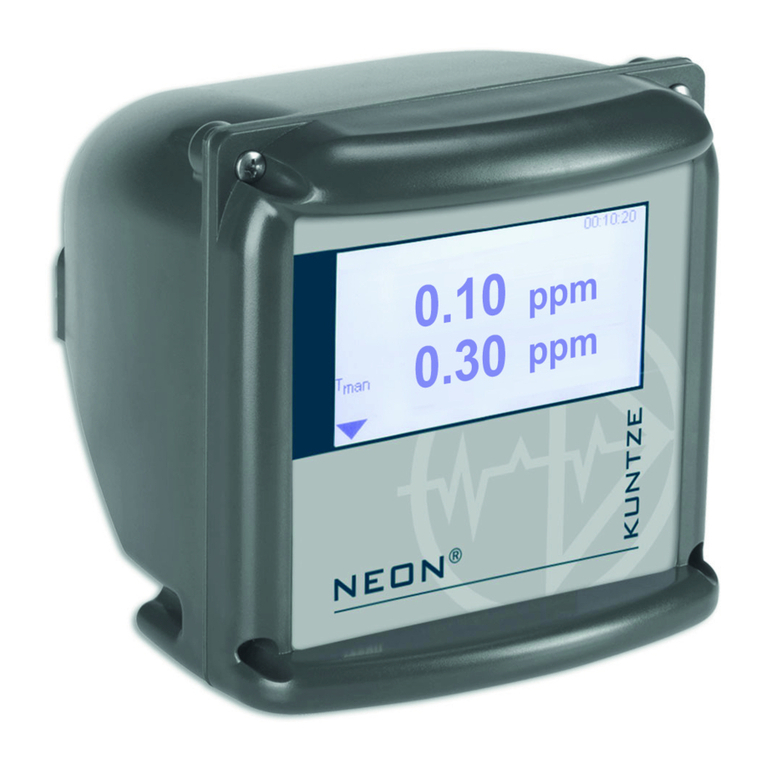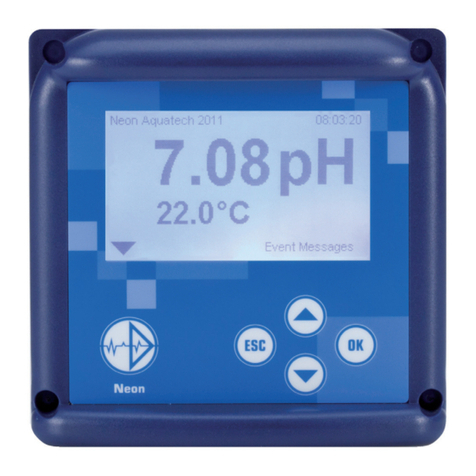
3
K 100 (W) Cl2, SCl2, ClO2, O2, O3, H2O2
Contents
1. Your K 100 .....................................................................................................4
1.1General and Safetyinstructions ...............................................................5
1.2Application ...............................................................................................6
1.3Intendeduse ............................................................................................6
1.4Features...................................................................................................7
1.5Technicaldata ..........................................................................................8
2. Instructions for installation and connections .............................................9
2.1Dimensions ............................................................................................ 10
2.2 Installation K 100 ................................................................................... 11
2.3 Installation K 100 W ............................................................................... 12
2.4Connection diagram K100 ..................................................................... 13
2.5 Connection diagram K 100 W................................................................. 14
3. Operation of the instrument....................................................................... 15
3.1How to adjustparameters....................................................................... 16
3.2Where to lookforinformation.................................................................. 17
3.3Menuoverview ........................................................................................ 18
4. Code and laguage...................................................................................... 19
5. Adjustment of the meter ............................................................................ 20
5.1 Calibration .............................................................................................. 21
5.2Temperaturecompensation .................................................................... 22
5.3Automatic sensorcleaningASR(option)................................................. 23
5.4Averaging ............................................................................................... 23
6. Adjustment of the controller ...................................................................... 24
6.1ON/OFFcontroller .................................................................................. 25
6.2P /PIcontroller asimpulse-frequencycontroller..................................... 26
6.3 P / PI controller as pulse-pause controller .............................................. 27
6.4Activation and deactivationofthecontroller............................................. 28
6.5Turn-ondelay ......................................................................................... 28
6.6External controllerstop(digital input) ..................................................... 28
6.7Manual operation oftherelays................................................................ 29
6.8 Dosage check ........................................................................................ 30
7. Data output.................................................................................................. 31
7.1Currentoutput ........................................................................................ 31
7.2Current output ascontrolleroutput ......................................................... 31
7.3Serialinterface RS485 (option) ............................................................... 31
8. Limit values and Alarm.............................................................................. 32
8.1Alarm ..................................................................................................... 33
8.2Configurationof the alarmrelay .............................................................. 34
8.3Error messages...................................................................................... 35
9. Operation and maintenace........................................................................ 36
10. Service ...................................................................................................... 38
Index ............................................................................................................... 39
Customer settings - for reference! ................................................................. 41































